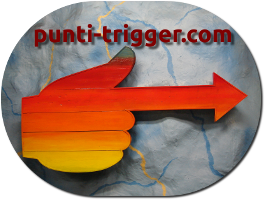The Sternocleidomastoid lends itself to some of the most interesting myofascial syndromes and is a prime example of how trigger points can sometimes give rise to the most multifarious misdiagnoses.

The muscle, as its name tells us, consists of two divisions, one external and anterior that inserts at the Sternum and Clavicle, and the other, posterior and internal that attaches to the Clavicle. The common origin of the muscle is in the Mastoid process.
The functions of the muscle include rotation toward the opposite side of the face or upward, and when working bilaterally, flexion of head and neck forward and backward, as well as limiting hyperextension, as eg in whiplash in an car accident. In addition, the Sternocleidomastoid muscles are subsidiary in lung inhalation. They also house nerve proprioceptor bodies in particular with regard to nerve information relating to the head position relative to the body.
Simptoms
The problems caused by trigger points in the Sternocleidomastoids include both pain and problems of autonomic and proprioceptive nature. However, is to be noted immediately that neck pain is not usually caused by trigger points in the Sternoclaidomastoids but by other muscles. That said, the trigger points in this muscle cause a tremendous amount of different problems and are often difficult to identify for those unfamiliar with myofascial syndromes.
These symptoms may include referred pain, balance problems, visual disturbances, systemic symptoms:
- Pain in the Temporomandibular joint
- Pain in the ear
- Migraine, and nearly every type of headache
- Facial pain similar to Trigeminal syndrome
- Pain in the teeth
- Pain in swallowing
- Dizziness and in extreme cases, fainting
- Falls
- Partial temporary deafness
- Disturbances in the perception of the weight of objects
- Blurred or double vision
- Watery eyes and redness of the eyes
- Drooping eyelids
- Nasal and sinus congestion, symptoms of sinusitis
- Dry cough.
- Pale and cold forehead.
The list of possible symptoms is so incredible if you think that the cause may be simply to be found in tiny muscle contractions. Is then obvious that these symptoms can give rise to the most varied and potentially erroneous diagnoses.
Causing and perpetuating factors
While traumatic episodes such as whiplash in a car accident can trigger myofascial syndromes, more often than not the causes lie in faulty posture or anatomical unbalance the head. An important observation that must be made about the patient is whether the head is positioned too far forward with respect to the shoulders. If one supports the back and head against the wall, the space of cervical lordosis between the neck and wall should be about 2.5 inches. If this space is much greater (or less) there is a marked postural problem that will go to overload the Sternocleidomastoids among other muscles, forcing them to do continuous work to allow the face to be facing forward instead of downward.
It is therefore essential to correct these postural defects, otherwise the syndrome will reappear even if successfully treated at first.
Another perpetuating factor may be in some cases a collar or tie kept too tight.
Treatment
The Sternocleidomastoid muscle is one of the few to need almost exclusively the pincer hand technique. You grab the muscle between the thumb and fingers of the hand, and roll the muscle fibers between the fingers to find taut bands and trigger points. Having identified these, you increase the pressure. Note that the muscle consists of two branches, the sternal and the clavicular, so we must make sure to deal with both. In addition, the muscle is subject to insertion trigger points at both ends (ie both at the mastoid process and at the sternum and clavicle), and these areas it will be proper to use instead the straight hand or strengthened fingers or thumb techniques.
The massage of the Sternocleidomastoid so performed can be quite painful, so it's best not to overdo it but rather to come back to it often over several sessions for maximum benefit without causing undue stress in the patient.
